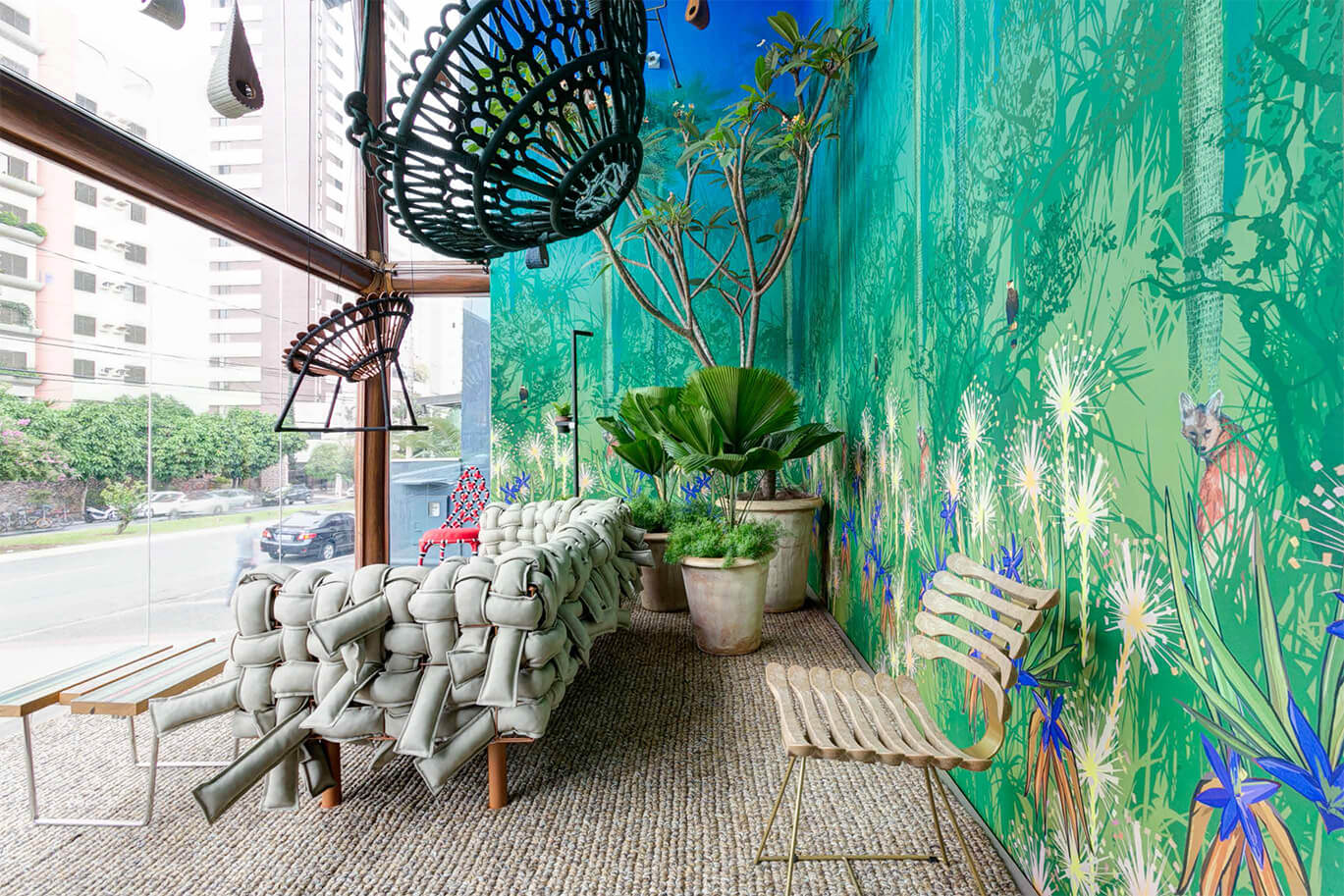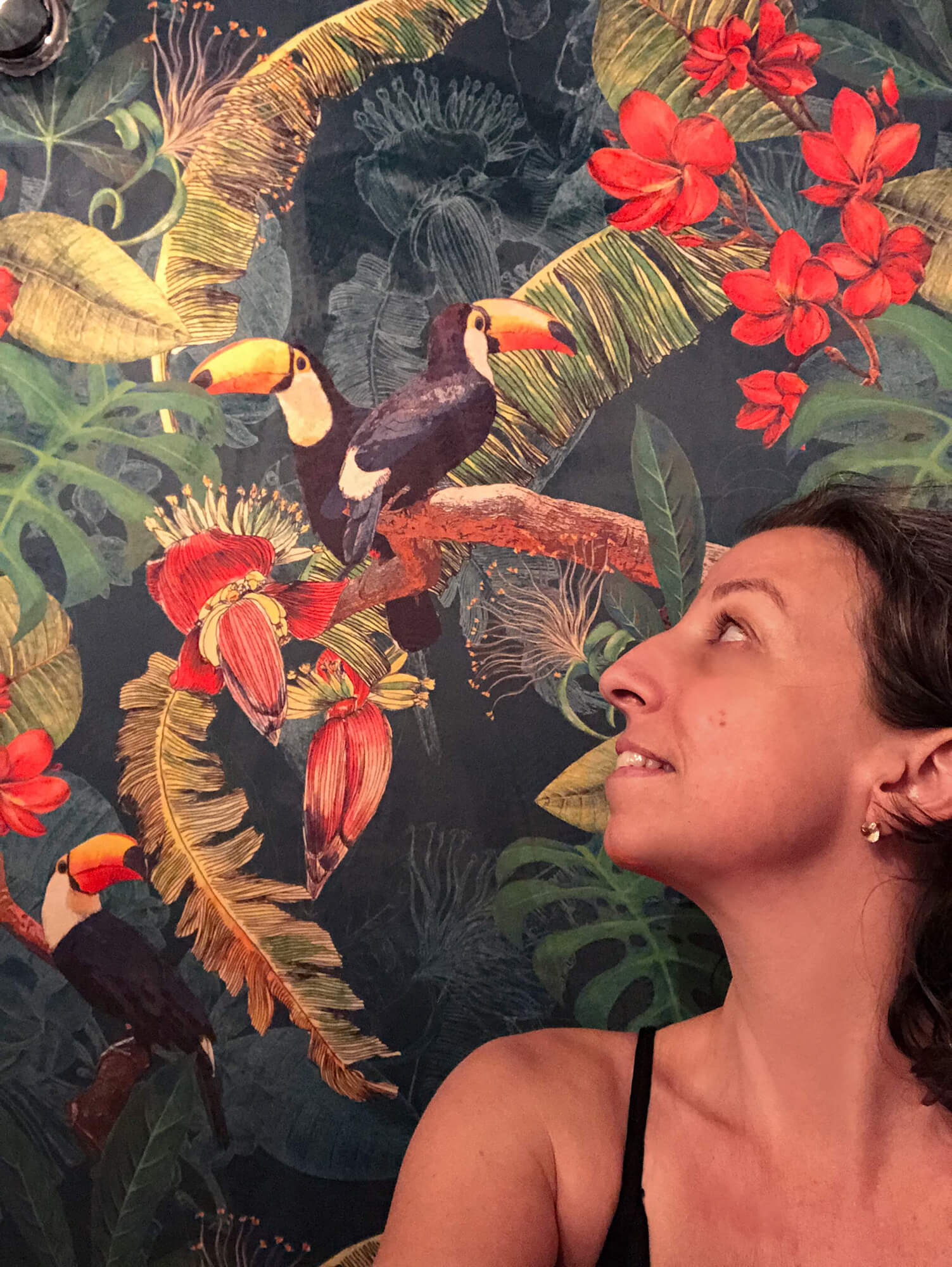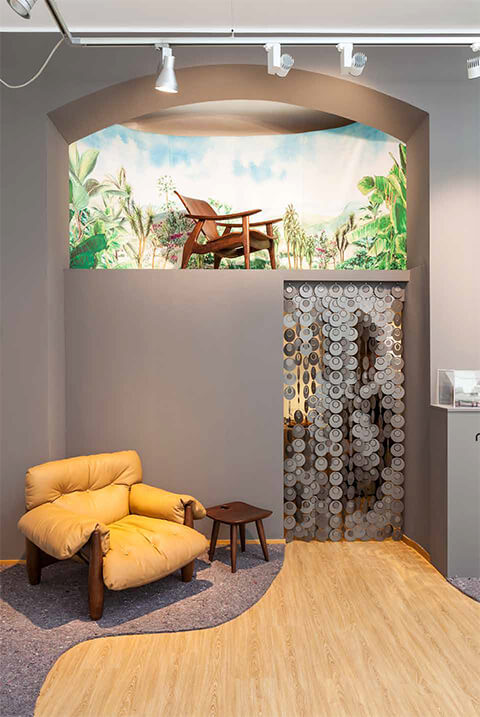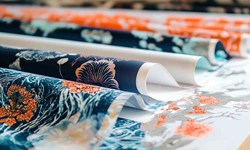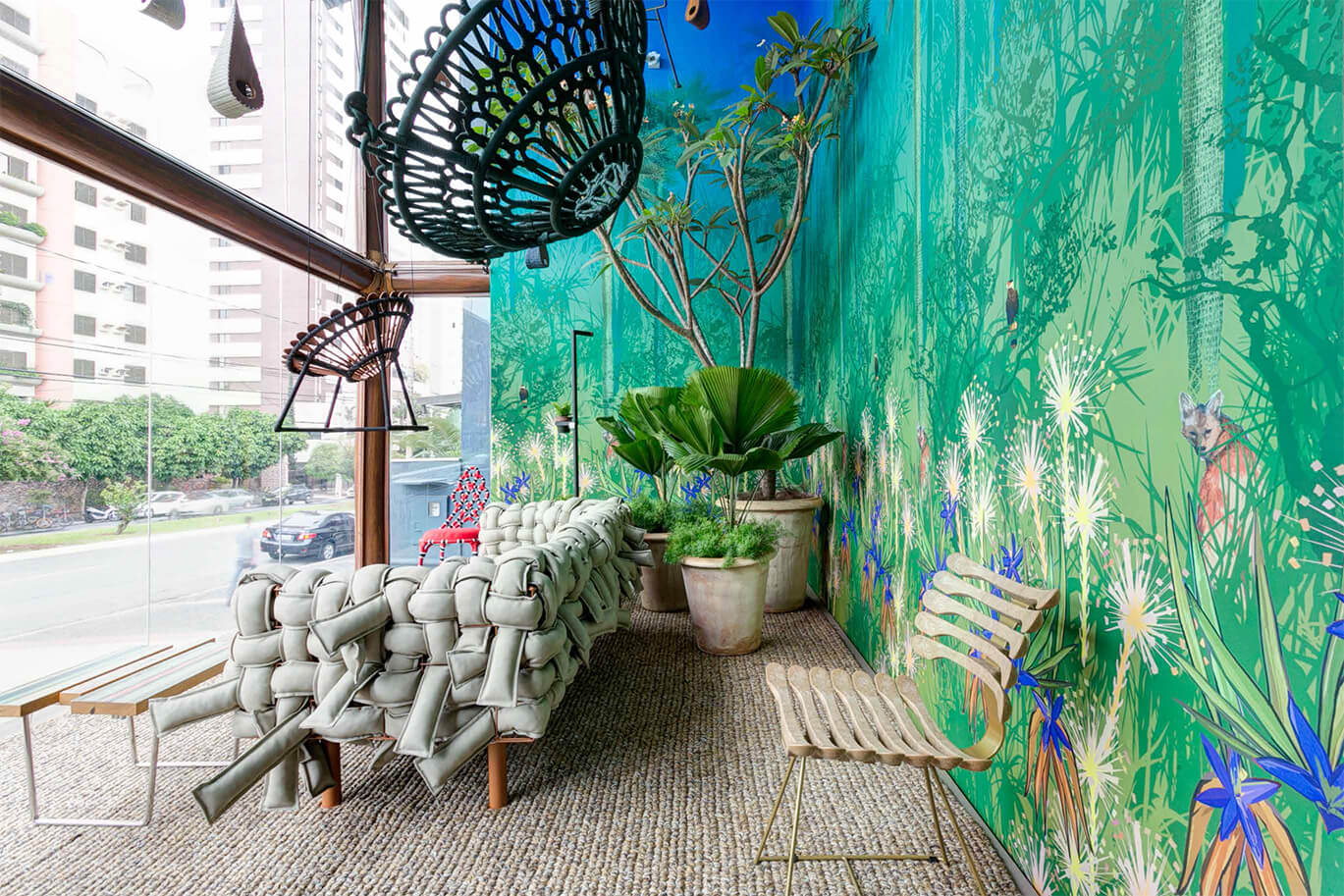
Digital textile designer Juliana Pelegrinello speaks to Harry McMullen about the burgeoning South American digital textile scene, embracing her Brazilian roots, and bouncing back from Covid-19 in 2021
Juliana Pelegrinello first worked with textiles when studying for her surface designer degree at the London College of Communication in the early 2000s. She knew from this point that textiles were going to shape her life.
Half a decade later, the designer took a chance by opening her own studio in 2007 when her family returned to Brazil after living in the UK for 13 years. A further 13 years later, Pelegrinello has pioneered a career for herself in digital textile printing.
“I opened my studio in 2007 and started selling designs for the major textile companies that supply the Brazilian fashion market,” explains Pelegrinello.
“The companies were still very much attached to the rotative [rotary screen printing] process of printing textiles. Designing for the digital printers was a novelty here in Brazil, but one that I am proud to have been of part of in the early days.”
Pelegrinello has been designing out of São Paulo for the textile industry, as a B2B design consultant, creating new collections for her online shop and providing a bespoke design service for architects and interior designers. She champions digital textiles as they completely add a new dynamic to fashion and home decorations.
“What I find magical about textiles is their sheer versatility. They can be used in traditional ways in fashion or décor, but increasingly I have been using it as an alternative to wallpaper for decorating walls. I feel it gives walls a further layer of complexity when fabrics are used instead of paper,” explains Pelegrinello.
CHOOSING DIGITAL
Thanks to the efforts of digital textile printing enthusiasts such as Pelegrinello, Brazil has consistently been one of the most vibrant markets in South America for the sector. And Pelegrinello remains focused on highlighting the strengths of digital printing in Brazil over analogue alternatives.
“I work with a fantastic supplier here in São Paulo called Weave Design, they use Mimaki equipment for my décor line of prints,” says Pelegrinello. “What I love about the whole digital method is the fact that I can design and choose the fabric and manufacture the printed textile within seven days.
“Digital printing offers so much more than other methods. In terms of designing a print, I have no restrictions on the size of the repeat, no restrictions on the method I choose to create the images and there is also a sustainable benefit in terms of the environment and the carbon footprint. Digital printing is much more eco-friendly.”
But digital textile printing is not all smooth sailing for designers, as Pelegrinello highlights the restrictions on using the technology.
“The downside of digital printing for textiles is still colour management, due to the lack of colour options available and the different subtracts and fibres,” she says.
However, Pelegrinello states that she has seen improvements in the ever-evolving digital print market on the ink front in recent years.
“While it is a hinderance right now, I understand these are always being improved. I have seen through the years the industry go from the basic CYMK four colour printers to eight. In more recent years printers are now also using some special colours such as the fluorescent range of yellows, greens and pinks.”
EMBRACING BRAZIL THROUGH DIGITAL PRINTING
Brazilians are known for having an affinity with their surroundings. From the Amazon rainforest to the tropical coastal beaches, Brazilians have always infused their geographical environment into their arts and Pelegrinello’s work is no different.
“The Brazilian nature is abundantly rich with diversity and colour,” explains Pelegrinello. “Our people are also fun and happy people in spite of all the difficulties the country faces which is truly inspirational. My surroundings enormously impact my design, I am an avid drawer and observer of the natural world and I love the richness of the Brazilian biomes.”
She even had one of her designs on display at a national exhibition at the Museu da Casa Brasileira (Brazilian Home Museum), illustrating the scope of her designs on the national stage.
However, Pelegrinello is not one for sugar-coating her ancestral home, she also shines a light on how her designs are reflective of the differences in culture throughout Brazil.
“Brazil has enormous cultural differences between each place,” says Pelegrinello. “I have to cater to all as a designer, so I design fabrics with a tropical theme, with exotic birds and foliage, but I also design prints with a more neutral undertone. The key is that you have to understand the differences between each culture to design for the whole country.”
A CUSTOMISED FUTURE
Understanding the environment and clientele is key, and in Brazilian culture, Pelegrinello understands the intimate preferences of the various regions, social classes and cultures across the country.
“For example, in São Paulo there’s a neighbourhood where the fashion shops are. Traditionally, these shops do not sell clothes that have the lilac colour or carnation flowers which here represent death and should not be incorporated in print design,” she says, outlining the need for local knowledge before entering the design market in Brazil.
Pelegrinello believes this level of observance and the subsequent approach of customisation will be responsible for driving the fashion market in the future.
“There are also the cultural differences between the different regions of Brazil that have to be taken into consideration,” continues Pelegrinello. “In the northeast of the country consumers love bold happily coloured prints, while in the south they prefer more neutral palettes and themes, in this respect our digital fashion market is already customised.”
As well as the cosmetic drive for a more customised approach to fashion & home design, Pelegrinello believes there will be more bespoke design in the future of textiles due to the improved logistics and manufacturing techniques.
“I do believe that more and more customisation in fashion and décor will become mainstream, especially since the lead time for manufacturing and delivery has become shorter and shorter,” she says. “There is almost no need to invest in product stock to supply the market.”
BOUNCING BACK AND THE FUTURE
The Covid-19 pandemic has made some kind of indentation on every part of the textile supply chain and Pelegrinello’s work has had no immunity. Her orders completely ceased in March, April, May, June and July, before picking up again in the later part of 2020.
“2021 is still going to be a year full of challenges but I intend to increase my print collection range for décor fabrics to offer even more possibilities to my costumers. My clientele are still learning that this level of bespoke service is possible. I also need to increase the exposure of my brand, so I intend to take part in exhibitions and business fairs that are happening in Brazil,” she says, looking forward to the year ahead.
“I hope to be able to open a small flagship store in the next five years to be able to showcase all the applications of the fabrics I work with and the possibilities that customisation can bring to my customers,” continues Pelegrinello.
Looking at the state of the digital printing market globally, Pelegrinello believes the textile printing market could see a seismic shift towards digital dominance.
“The digital printing process offers the possibility of idealising, manufacturing and delivering beautiful textile products with a very short turnaround time. I think it will eventually take over other methods. In my business this is a reality already,” concludes Pelegrinello.
To find out more about Pelegrinello click here to visit her website.
Have your say. Tweet and follow us @WTiNcomment


